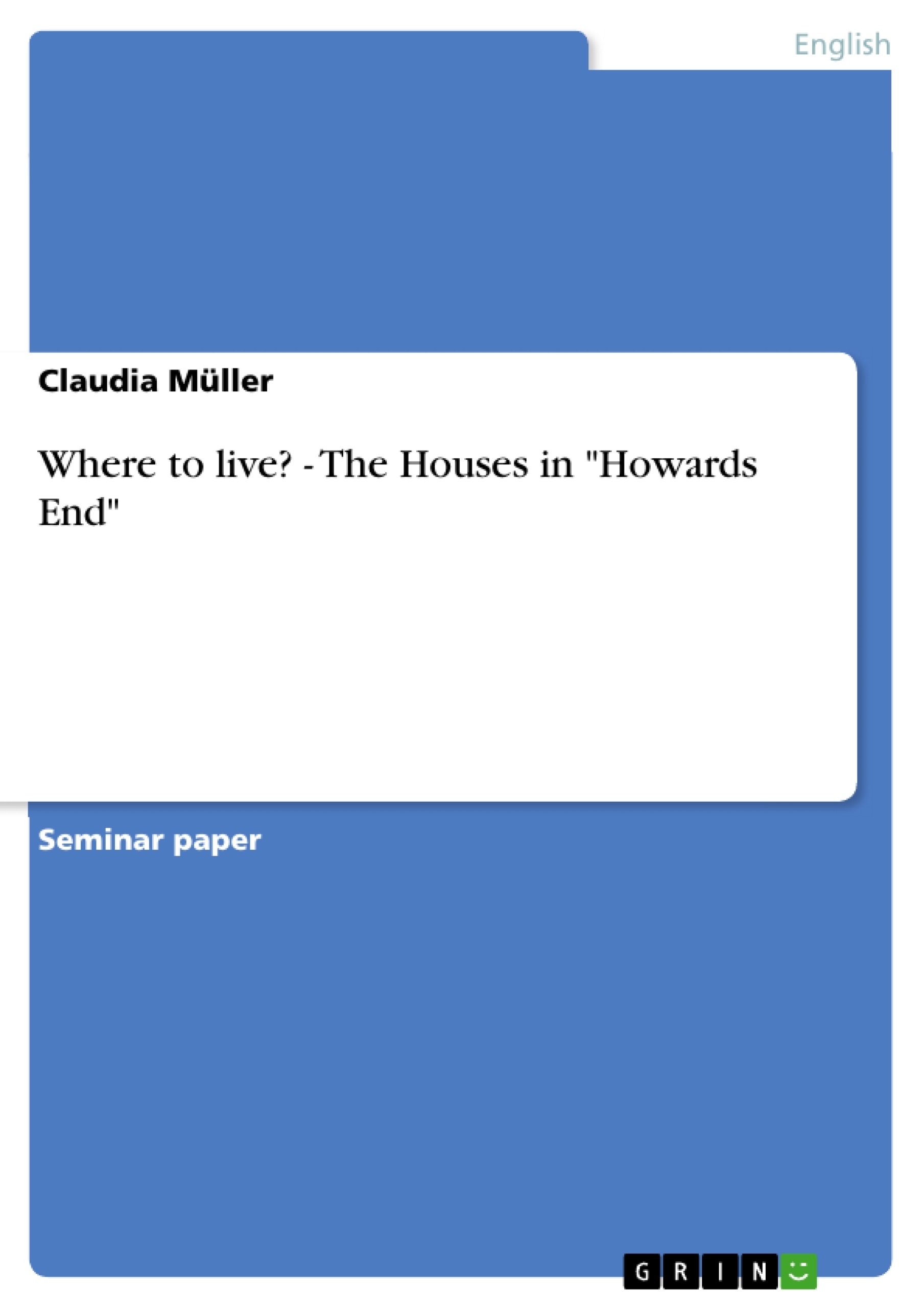The paper ‘Where to live – The Houses in Howards End’ shows in which way E. M. Forster associates certain housing conditions with special types of character, in how far he thinks that housing conditions influence the way people are and behave and what conclusion he draws as to where to live.
Basically, there are three different types of houses portrayed in the novel: the dwelling place of the urban lower middle class, London town houses, and country houses. It can be argued that there are differences between these types of houses and also that the narrator differs the houses’ quality among themselves. Taking the city – country dichotomy as a starting point, the paper discusses the standpoint Forster takes towards the quality of these houses when he shows that they are ‘alive’ or not (whether they possess life, spirit or souls).It is explained in which way the economic status of the main characters of the novel (the Schlegels, the Wilcoxes and the Basts) is reflected in their respective housing-conditions and what position Forster takes towards housing at the beginning of the twentieth century in general.
The paper also relates to some of the current views and popular concepts of Forster’s time on the different housing conditions of people. Taking a look at some general statements about living in the city versus living in the country and living in flats versus living in houses, it is explained what the narrator’s preferences are as to where one should live. The paper discusses in how far this attitude is reflected in the narrator’s decision about the ideal place to live for his heroine Margaret Schlegel and in how far this solution is a realistic one.
Table of Contents
- Introduction
- Living in the city
- The urban slum
- The London town houses
- Wickham Mansions
- Ducie Street
- Wickham Place
- Living in the country
- The country houses
- Oniton
- Howards End
- The country houses
- Conclusion
Objectives and Key Themes
This paper examines the relationship between housing conditions and character development in E.M. Forster's Howards End. The author investigates how different types of housing, particularly those found in urban and rural settings, influence the lives and behaviors of the novel's main characters, the Schlegels, the Wilcoxes, and the Basts.
- The impact of urban and rural environments on character development.
- The connection between housing conditions and social class.
- The author's perspective on ideal living conditions at the beginning of the 20th century.
- The role of nature and its influence on personal growth.
- The depiction of London and its effect on the characters' lives.
Chapter Summaries
The introductory chapter sets the stage for the analysis by exploring the significance of housing in E.M. Forster's Howards End. It introduces the author's central argument that Forster connects specific housing conditions with distinct character traits and explores how the novel explores the impact of housing on individual lives and behaviors.
Chapter 2 delves into the portrayal of London as a suffocating, dehumanizing environment in the novel. It examines how Forster depicts the city through imagery of grey skies, oppressive streets, and a general sense of monotony, highlighting the negative impact of urban life on individuals. The chapter also explores the connection between London's depressing atmosphere and the housing conditions of its inhabitants, specifically focusing on the lower middle class represented by Leonard Bast and his wife Jacky.
Keywords
This paper focuses on the concepts of urban and rural living, housing conditions, social class, character development, and the influence of environment on individual lives. It explores these themes through an examination of E.M. Forster's Howards End, analyzing the relationship between the characters, their living spaces, and their personal transformations.
- Quote paper
- Claudia Müller (Author), 2004, Where to live? - The Houses in "Howards End", Munich, GRIN Verlag, https://www.grin.com/document/39504




